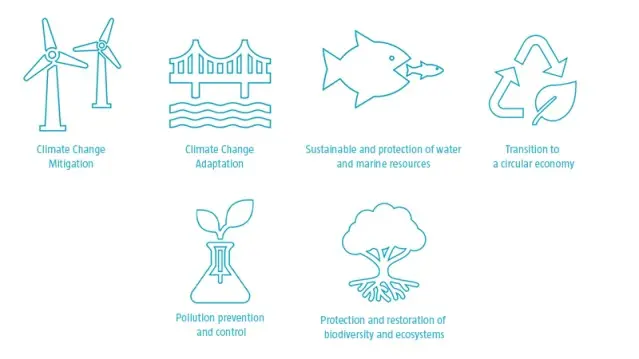Disclaimer Robeco Switzerland Ltd.
The information contained on these pages is solely for marketing purposes.
Access to the funds is restricted to (i) Qualified Investors within the meaning of art. 10 para. 3 et sequ. of the Swiss Federal Act on Collective Investment Schemes (“CISA”), (ii) Institutional Investors within the meaning of art. 4 para. 3 and 4 of the Financial Services Act (“FinSA”) domiciled Switzerland and (iii) Professional Clients in accordance with Annex II of the Markets in Financial Instruments Directive II (“MiFID II”) domiciled in the European Union und European Economic Area with a license to distribute / promote financial instruments in such capacity or herewith requesting respective information on products and services in their capacity as Professional Clients.
The Funds are domiciled in Luxembourg and The Netherlands. ACOLIN Fund Services AG, postal address: Leutschenbachstrasse 50, CH-8050 Zürich, acts as the Swiss representative of the Fund(s). UBS Switzerland AG, Bahnhofstrasse 45, 8001 Zurich, postal address: Europastrasse 2, P.O. Box, CH-8152 Opfikon, acts as the Swiss paying agent.
The prospectus, the Key Investor Information Documents (KIIDs), the articles of association, the annual and semi-annual reports of the Fund(s) may be obtained, on simple request and free of charge, at the office of the Swiss representative ACOLIN Fund Services AG. The prospectuses are also available via the website https://www.robeco.com/ch.
Some funds about which information is shown on these pages may fall outside the scope of CISA and therefore do not (need to) have a license from or registration with the Swiss Financial Market Supervisory Authority (FINMA).
Some funds about which information is shown on this website may not be available in your domicile country. Please check the registration status in your respective domicile country. To view the Robeco Switzerland Ltd. products that are registered/available in your country, please go to the respective Fund Selector, which can be found on this website and select your country of domicile.
Neither information nor any opinion expressed on this website constitutes a solicitation, an offer or a recommendation to buy, sell or dispose of any investment, to engage in any other transaction or to provide any investment advice or service. An investment in a Robeco Switzerland Ltd. product should only be made after reading the related legal documents such as prospectuses, annual and semi-annual reports.
By clicking “I agree” you confirm that you/the company you represent falls under one of the above-mentioned categories of addressees and that you have read, understood and accept the terms of use for this website.
Sustainable Investing
EU Taxonomy
The EU Taxonomy is a strategy to create a harmonized understanding of what actually constitutes sustainable activities across the European Union. It attempts to define ‘green activities’ for the first time, using minimum criteria that economic activities should comply with in order to be considered environmentally sustainable.
As such, it forms a key component of the EU’s Sustainable Finance Action Plan, which aims to promote sustainable investment across the 27-nation bloc, and the EU’s Sustainable Finance Disclosure Regulation (SFDR), which aims to make the sustainability profile of strategies more comparable and better understood by end-investors.
The Taxonomy states that only activities which substantially contribute to one or more of six environmental objectives should be defined as being green. These are climate change mitigation; climate change adaption; protecting marine and water resources; transitioning to a circular economy; preventing pollution; and protecting and restoring biodiversity and ecosystems.

Disclosing alignment
Large listed companies incorporated in the EU are required to report which part of their revenue and expenditure is in line with the Taxonomy. These corporate disclosures are being introduced in two phases. In 2022, companies began disclosing the percentage of revenues and expenditure in economic activities that are listed in the Taxonomy (i.e. eligible activities) as contributing to the climate change mitigation and climate change adaptation objectives.
From 2023 onwards, companies must also assess whether these eligible activities also comply with the Taxonomy’s technical screening criteria (i.e. aligned activities) covering all six environmental objectives.
The technical screening criteria set a high bar on the environmental performance that activities must meet in order to evidence their substantial contribution to an environmental objective, and demonstrate that they do not significantly harm any other objective. As a result, there is the possibility that the percentages of Taxonomy-aligned figures that will be reported in 2023 are lower than the Taxonomy-eligible figures disclosed in 2022.
SFDR regulation
SFDR is an evolving set of EU rules aiming to create a level playing field for how sustainable investment strategies are classified by asset managers. It helps to clarify the definition of a ‘sustainable fund’ and combat the growing threat of greenwashing.
Changes under SFDR Level II
Under the SFDR, asset managers are required to disclose the percentage of their assets under management that sit within Taxonomy-aligned activities. Only strategies classified as Article 8 or 9 are in scope for disclosures, i.e. those strategies that promote their environmental characteristics, or those pursuing a distinct sustainability objective.
This reporting requirement entered into force in January 2022 under SFDR Level I legislation. From January 2023 onwards, financial products will disclose more granular information under SFDR Level II standards.
















